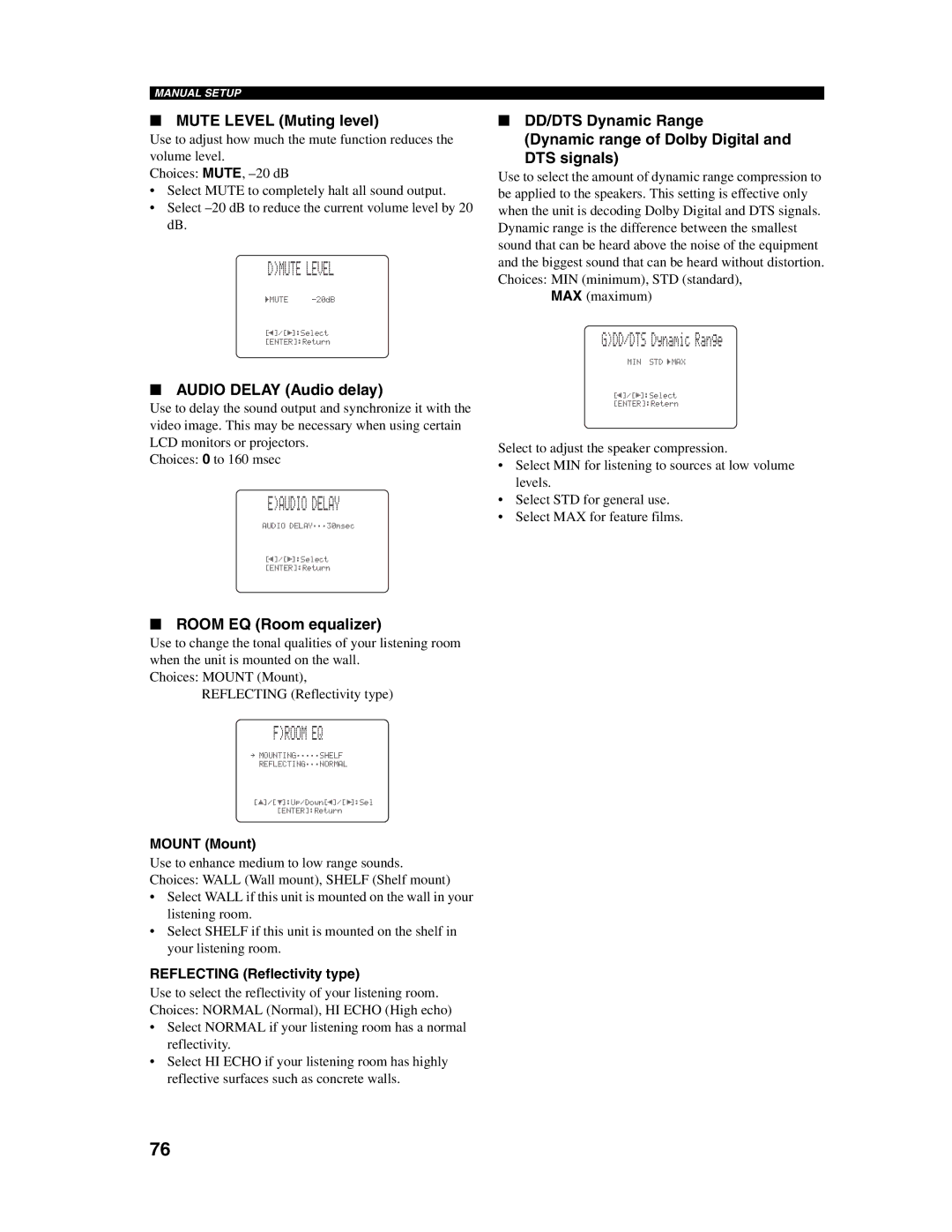
MANUAL SETUP
■MUTE LEVEL (Muting level)
Use to adjust how much the mute function reduces the volume level.
Choices: MUTE,
•Select MUTE to completely halt all sound output.
•Select
D)MUTE LEVEL
)MUTE
p | p |
■AUDIO DELAY (Audio delay)
Use to delay the sound output and synchronize it with the video image. This may be necessary when using certain LCD monitors or projectors.
Choices: 0 to 160 msec
E)AUDIO DELAY
;;;30msec
p | p |
■ROOM EQ (Room equalizer)
Use to change the tonal qualities of your listening room when the unit is mounted on the wall.
Choices: MOUNT (Mount), REFLECTING (Reflectivity type)
F)ROOM EQ
. MOUNTING;;;;;SHELF REFLECTING;;;NORMAL
[p | p | p | p |
[ENTER]:Return
MOUNT (Mount)
Use to enhance medium to low range sounds. Choices: WALL (Wall mount), SHELF (Shelf mount)
•Select WALL if this unit is mounted on the wall in your listening room.
•Select SHELF if this unit is mounted on the shelf in your listening room.
REFLECTING (Reflectivity type)
Use to select the reflectivity of your listening room. Choices: NORMAL (Normal), HI ECHO (High echo)
•Select NORMAL if your listening room has a normal reflectivity.
•Select HI ECHO if your listening room has highly
reflective surfaces such as concrete walls.
■DD/DTS Dynamic Range
(Dynamic range of Dolby Digital and
DTS signals)
Use to select the amount of dynamic range compression to be applied to the speakers. This setting is effective only when the unit is decoding Dolby Digital and DTS signals. Dynamic range is the difference between the smallest sound that can be heard above the noise of the equipment and the biggest sound that can be heard without distortion. Choices: MIN (minimum), STD (standard),
MAX (maximum)
G)DD/DTS Dynamic Range
MIN STD )MAX
p | p |
Select to adjust the speaker compression.
•Select MIN for listening to sources at low volume levels.
•Select STD for general use.
•Select MAX for feature films.
76
